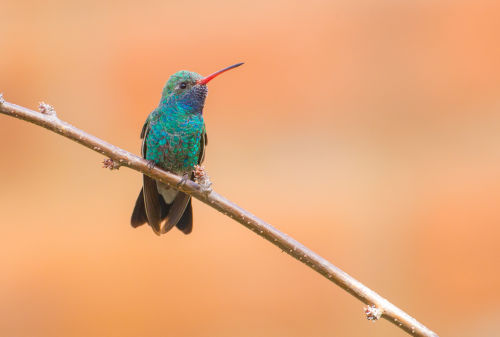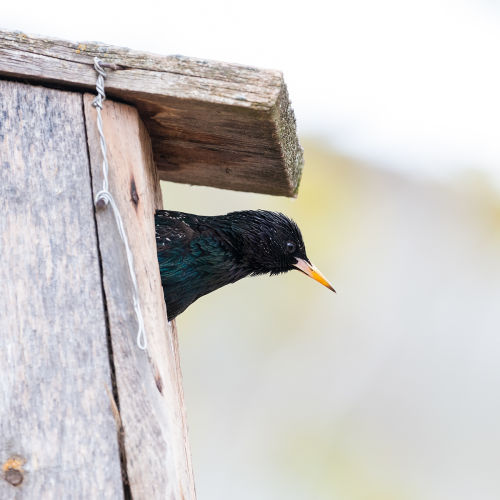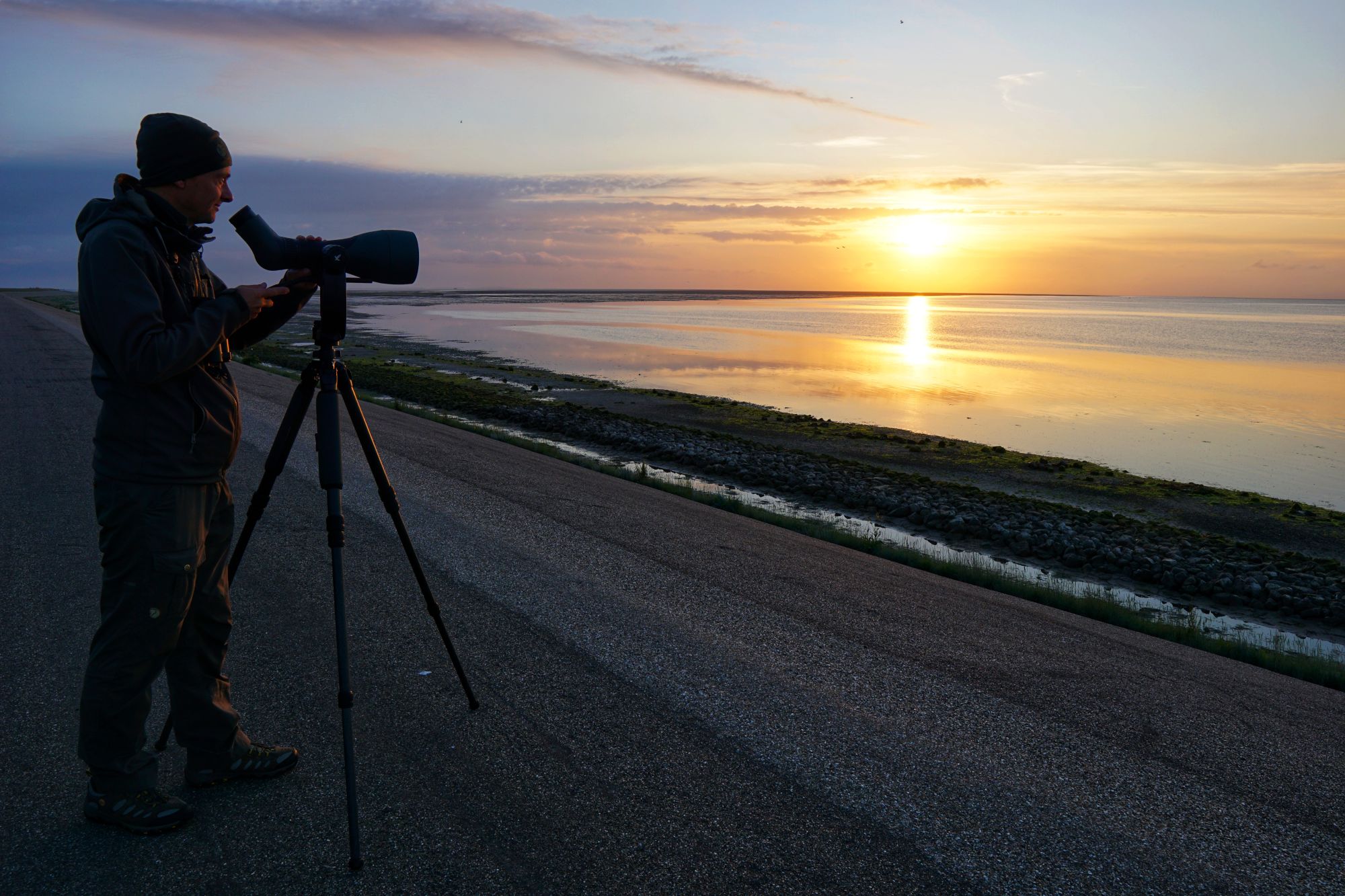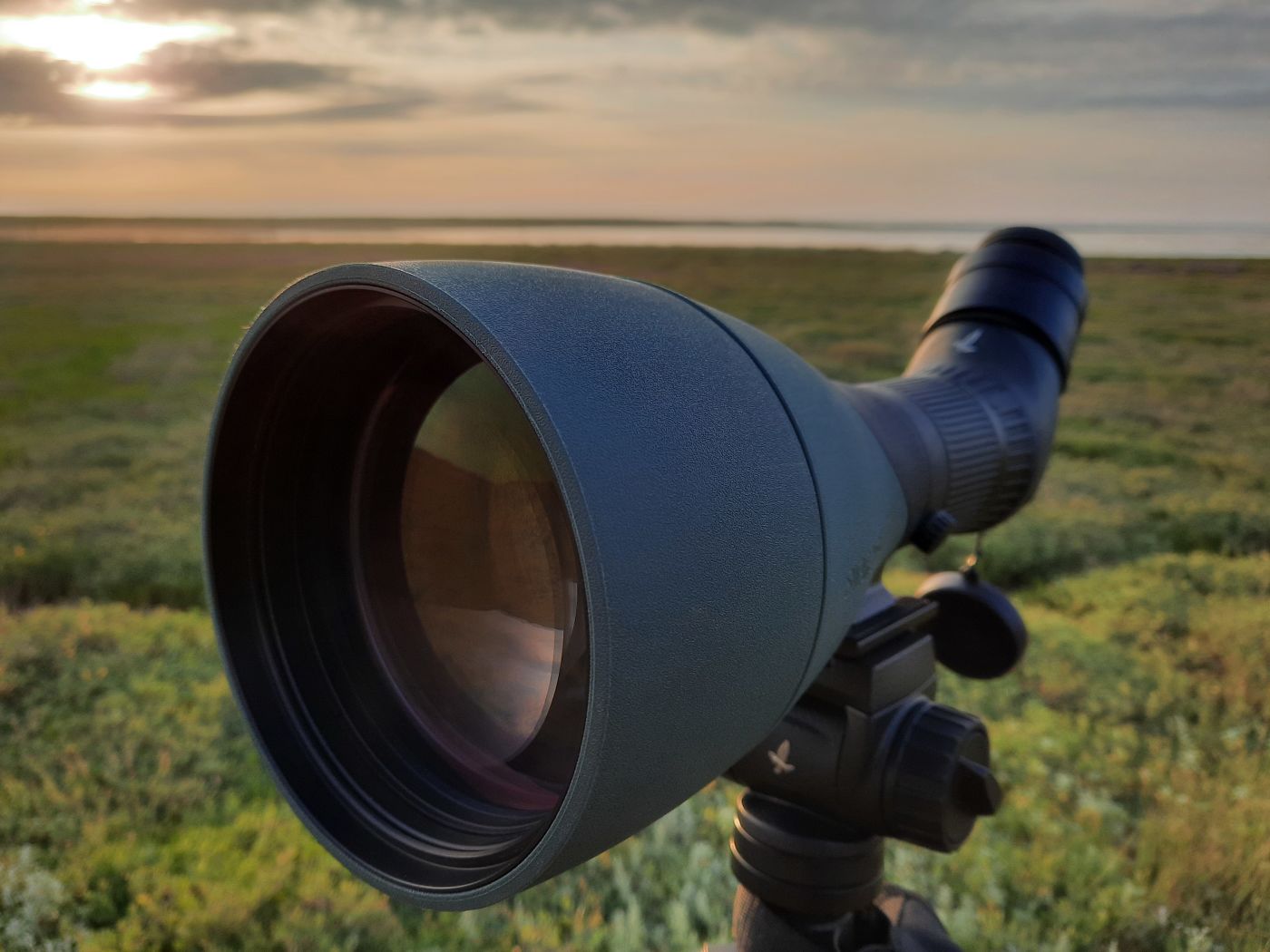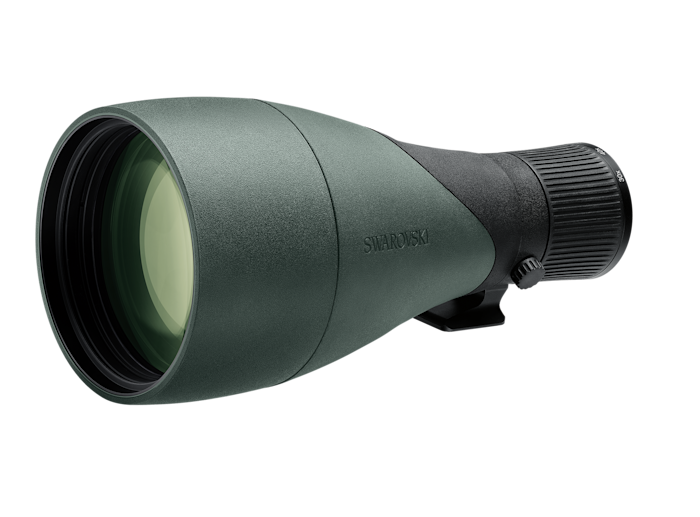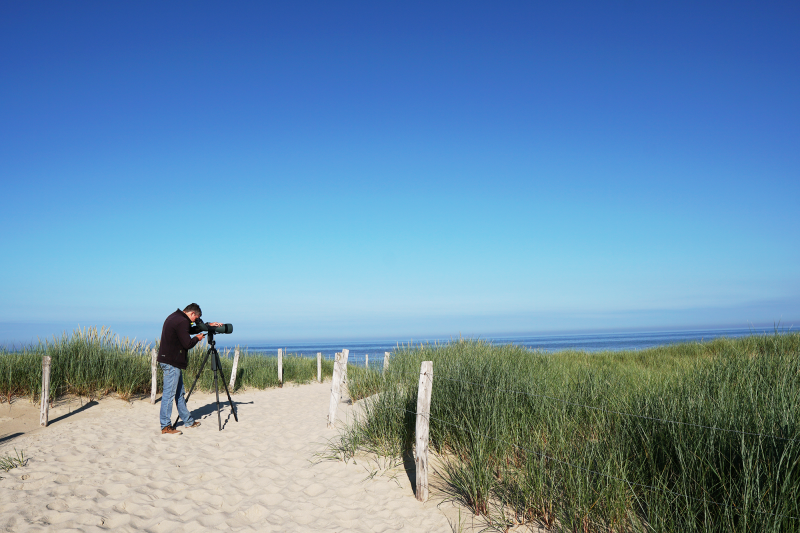When spending a weekend in the Dutch island on Texel, I am always keen to maximise my time birding. This usually means heading out before sunrise and often spending the entire day in the field. Being late June, the time was less than optimal for rarities; yet anything was still possible. I decided to head out early to ‘de Schorren’, one of the few areas of saltmarshes on the island and a good area for roosting waders.
The early bird…
It was still fairly dark as I walked along the dyke. Meadow Pipits (Anthus pratensis) and Yellow Wagtails (Motacilla flava) called as they flew up from the shoreline. The sun broke the horizon and a warm orange glow lit the Wadden Sea in front of me. It was still an hour before high tide but already most of the mudflats were covered. With my binoculars, I could see the dark shapes of eiders in the distance. I put my eye up to the ATX and the 115-mm objective module lit up the world in front of me.
Scanning through the distant eider flocks I could see individuals in various stages of moult. Until 10 days ago a king eider had been seen in the area. Even looking into the light, the incredible clarity of the 115-mm objective module made it possible to look for that hint of colour that might give away a King Eider (Somateria spectabilis) amongst the moulting Common Eiders (Somateria mollissima). Unfortunately, all I could see were common eiders. (Would I be lucky some other time? Find out.) However, the views I had with the 115-mm objective module didn’t leave any doubt in my mind as to whether I had missed anything due to the tricky viewing conditions. I could continue on to ‘de Schorren’.
High tide at ‘de Schorren’
An early morning high tide at ‘de Schorren’ means opportunity to watch waders as they approach with the upcoming tide. Looking east, the sunrises gives a beautiful light but also creates challenging conditions for observation. Yet with the 115-mm objective module when looking into the light, distant silhouettes suddenly become awash with colour.
I spent some time looking through the feeding waders as they moved closer with the rising tide. As the birds moved closer to the edge of the salt marsh, groups flew to a roost along a creek. I moved my attention to the roosting birds. Looking through the 115-mm objective module the mass of grey on the colourful saltmarsh came alive.
See more details
I could see the detail of individual birds as they preened and bathed in the shallow water. A number of the Bar-tailed Godwits (Limosa lapponica) and Red Knots (Calidris canutus) were still in their stunning summer plumage. After observing their behaviour, I focused my attention on looking for a rarity again. Scanning slowly through the flock I could clearly see that the group consisted mostly of bar-tailed godwits and red knots.
A few Common Redshanks (Tringa totanus) roosted in the edge of the vegetation whilst Spotted Redshanks (Tringa erythropus), Ruddy Turnstones (Arenaria interpres) and a few Grey Plovers (Pluvialis squatarola) continued feeding along the shoreline. A summer plumage Dunlin (Calidris alpina) ran through the roosting birds, its black belly patch quickly giving away its identification. I could also see the light red brown of its coverts and rather long bill, suggesting this was a bird from the northern Scandinavian population, presumably a failed breeder that had returned early.
Find rarities quicker
I continued observing the now large flock and noticed a number of Curlew (Numenius arquata) roosting in the vegetation. Despite only being able to see the tops of some individuals the 115-mm objective module ensured the dark crown and clear pale central stripe of several Whimbrels (Numenius phaeopus) were clearly visible. Although the birds were roosting in high vegetation with their bills tucked into the feathers, I could use the head pattern along with the dark eye-stripe and lores to separate these birds without seeing their shape, bill or legs. Although when one bird stretched and revealed its shorter and more sharply bent bill-tip my identification was confirmed.
The needle in the haystack
My attention was then drawn to a lone plover some distance away. It was a fair way from the water’s edge where I had earlier seen the grey plovers. The bird also had a finer bill and more delicate appearance; a Golden Plover (Pluvialis apricaria). Both Pacific and American golden plovers have previously been found in June in the Netherlands, so this bird was worth checking. The sun was quite bright by now but even with the harsh light, I could appreciate the identification features in detail. I could see that the back was finely patterned and mostly light, the vent was also light, and the primaries extended beyond the finely patterned tertials. All these features pointed towards a European golden plover.
Suddenly I was distracted by the growling of my stomach. I checked the time and saw that it was already nine thirty. I had left at five o’clock and hadn’t had breakfast yet. Thanks to the huge image and edge-to-edge clarity of the 115-mm objective module, I had been fully immersed in the moment. With my stomach still complaining I started to head back for breakfast taking memorable views with me.
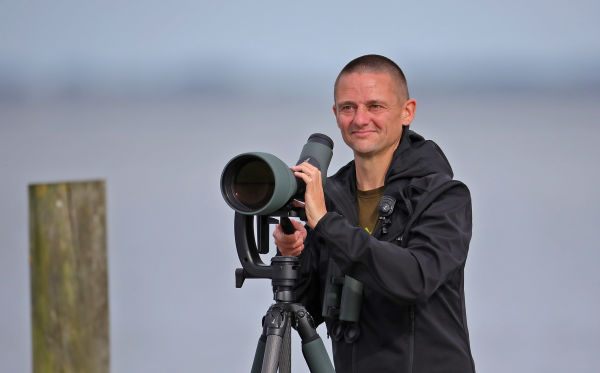
About the author:
Mark Collier
Mark Collier is an ecologist and dedicated birder. Born in 1976, this British ornithologist loves the outdoors, nature, photography, digiscoping, hiking, climbing, and – of course – birding. His beloved pastime brings him both peace & relaxation as well as excitement & fascination.
You may also follow Mark on social media: Facebook, Instagram, or Twitter.
